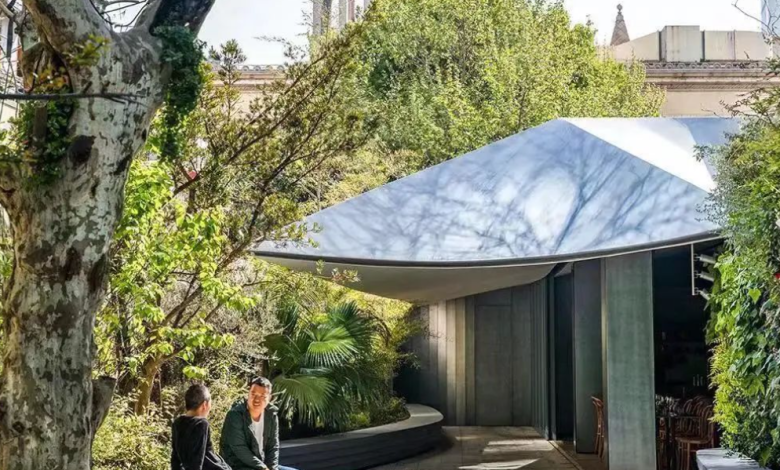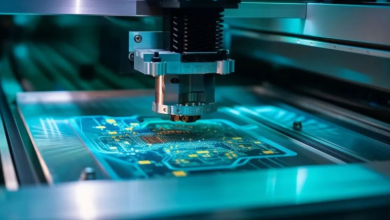How Tensile Membrane Structures Are Entering South Africa’s Solar Frontier

As South Africa accelerates its clean energy transition, a new architectural solution is quietly reshaping the future of sustainable design: photovoltaic-integrated tensile membrane structures. These lightweight, visually striking systems—often made with ETFE or PTFE materials—combine form, function, and solar energy harvesting into one seamless structure. Backed by growing China–Africa energy collaboration and initiatives like the “Photovoltaic+” Global Challenge, these structures are no longer just futuristic concepts. From sun-drenched city plazas to eco-conscious event spaces, tensile membranes powered by solar panels are beginning to dot the South African landscape, offering a model for climate-resilient urban infrastructure.
China–South Africa Energy Ties: A New Chapter in Green Collaboration
In recent years, the partnership between China and South Africa has taken on a new dimension—one that’s defined by a shared commitment to clean energy and sustainable development. At the center of this transformation is Shanghai, a global hub for innovation in architecture, green technology, and infrastructure. With the establishment of the African Energy Chamber’s Shanghai office, a clear signal has been sent: both sides are ready to deepen cooperation in renewable energy, especially solar.
One of the standout initiatives is the “Photovoltaic+” Global Challenge Program, which encourages cross-border collaboration on solar-powered solutions. This program not only fosters joint research and development but also promotes the application of advanced materials and modular design—such as ETFE/PTFE tensile membrane structures integrated with solar panels.

For South Africa, which enjoys abundant sunlight and faces increasing demand for sustainable infrastructure, these partnerships offer real, scalable solutions. For China, it’s a chance to export not just products, but knowledge and technology with global relevance. Together, Shanghai and South Africa are opening a new chapter in energy collaboration—one where clean power meets smart design, and innovation becomes a bridge between continents.
What Is Photovoltaic + Tensile Structure Architecture?
Photovoltaic + tensile structure architecture is an innovative approach that combines flexible solar technology with lightweight, high-performance membrane structures. In simple terms, it means integrating solar panels—typically thin-film or flexible PV modules—directly into architectural fabrics like ETFE (Ethylene Tetrafluoroethylene) or PTFE (Polytetrafluoroethylene). These membranes are already known for their durability, translucency, and resistance to extreme weather, and when combined with solar technology, they become not just a shelter but a power-generating surface.
This hybrid model is especially promising for Africa’s sun-rich regions, including South Africa, where the need for sustainable, off-grid energy solutions is growing fast. Tensile membrane structures are ideal for large-span applications like outdoor pavilions, public transit hubs, open-air markets, and community centers. They offer excellent solar exposure, minimal structural weight, and a sleek aesthetic that blends well with both urban and natural environments.
By harnessing clean energy while providing shade and climate protection, photovoltaic tensile structures can play a key role in addressing both energy access and climate adaptation in African cities. It’s a smart, multifunctional solution that reflects the future of architecture—where buildings are not just static shelters, but active contributors to a sustainable ecosystem.
Why South Africa? Climate, Sunlight & Sustainability Needs
South Africa is uniquely positioned to benefit from photovoltaic + tensile structure architecture, thanks to a combination of climate advantages, energy challenges, and evolving urban needs. With over 2,500 hours of sunshine per year in many regions, South Africa is one of the most solar-rich countries on the planet. This natural abundance of sunlight makes it a prime candidate for solar-integrated architectural solutions that can generate clean energy while serving essential structural functions.
In parallel, the country faces rising energy demands and frequent electricity shortages. As cities grow and public infrastructure expands, the need for sustainable, decentralized energy becomes more urgent—especially in public spaces, transit hubs, educational campuses, and informal urban zones where access to reliable power may be limited.
That’s where tensile membrane structures come into play. These lightweight, durable canopies—when paired with flexible solar panels—can provide shaded environments while generating power for lighting, cooling, or public amenities. They also align with South Africa’s vision for sustainable urban development and climate adaptation.
For anyone looking to enter the region’s fast-growing event or public infrastructure market, this guide to marquee tent suppliers in South Africa offers a helpful entry point into local industry insights and project possibilities.
Applications Across Sectors: From Shading Systems to Eco-Pavilions
Photovoltaic-integrated tensile structures are more than just eye-catching—they’re redefining how we think about multipurpose public infrastructure. Their lightweight nature, structural flexibility, and energy-generating capacity make them ideal for a wide range of real-world applications across sectors.
In bustling urban areas, solar-powered tensile rooftops can be used to cover outdoor markets, offering both shade and renewable energy for lighting, fans, or mobile charging stations. Transit shelters fitted with ETFE or PTFE membranes and integrated solar panels can provide weather protection while powering digital signage or security systems—especially useful in underserved areas where grid access is unreliable.
Cultural spaces are also embracing this dual-function design. Eco-pavilions for art exhibitions, community gatherings, or cultural events benefit from the aesthetic appeal and modular design of tensile architecture, while the built-in solar capacity supports sustainable event operations. Green festival tents, often temporary and deployed in remote locations, can now operate with far lower environmental impact thanks to solar-enhanced membranes.
From city centers to rural community hubs, photovoltaic tensile structures represent a smart fusion of architecture and energy—a practical solution for countries like South Africa aiming to expand infrastructure while staying on track with climate goals.
Made in Shanghai: Exporting Modular Tensile Solutions to Africa
Shanghai has emerged as a global leader in tensile structure innovation, and its manufacturers are now setting their sights on Africa. With a strong foundation in modular design, prefabrication, and clean-tech integration, Shanghai-based companies are well-positioned to deliver fast, scalable, and climate-resilient architectural solutions to African markets.
Through platforms like the Belt and Road Initiative and bilateral cooperation agreements, Chinese firms are forging deeper connections with countries like South Africa. These partnerships go beyond trade—they include joint ventures, technology sharing, and long-term infrastructure planning. Tensile membrane structures, often used in public spaces, schools, and transport hubs, are a natural fit for this cross-border collaboration.
Shanghai’s approach emphasizes efficiency and adaptability. Modular components are prefabricated in China, reducing on-site construction time and minimizing local labor demands. When paired with solar integration, these structures become even more appealing for African cities seeking sustainable, off-grid solutions.
Whether it’s a solar-powered market canopy in Johannesburg or an eco-pavilion in Cape Town, Shanghai’s tensile architecture is proving to be not only exportable but transformative—blending advanced engineering with Africa’s growing demand for clean, modern infrastructure.
The Future of Photovoltaic Urbanism in Africa
As African cities continue to grow and confront the dual challenges of climate change and energy access, photovoltaic tensile structures offer a forward-looking solution. These lightweight, solar-integrated systems are more than just shelters—they’re adaptable energy assets that support sustainable urban development. From reducing heat islands with shading systems to powering off-grid amenities in public parks, they merge infrastructure with environmental resilience.
Looking ahead, the role of photovoltaic urbanism in Africa is likely to expand, particularly as cities aim to meet climate adaptation goals under frameworks like the African Union’s Agenda 2063. Tensile membrane systems can be rapidly deployed, easily scaled, and customized for local conditions—making them ideal for fast-growing regions.
Most importantly, this future will be built through cross-continental collaboration. Partnerships between innovation hubs like Shanghai and African cities can bring cutting-edge materials, modular engineering, and renewable energy strategies into mainstream architecture. As the demand for eco-friendly, multifunctional urban infrastructure rises, photovoltaic tensile structures stand ready to become a defining feature of Africa’s green transformation—one canopy, market, and community hub at a time.




